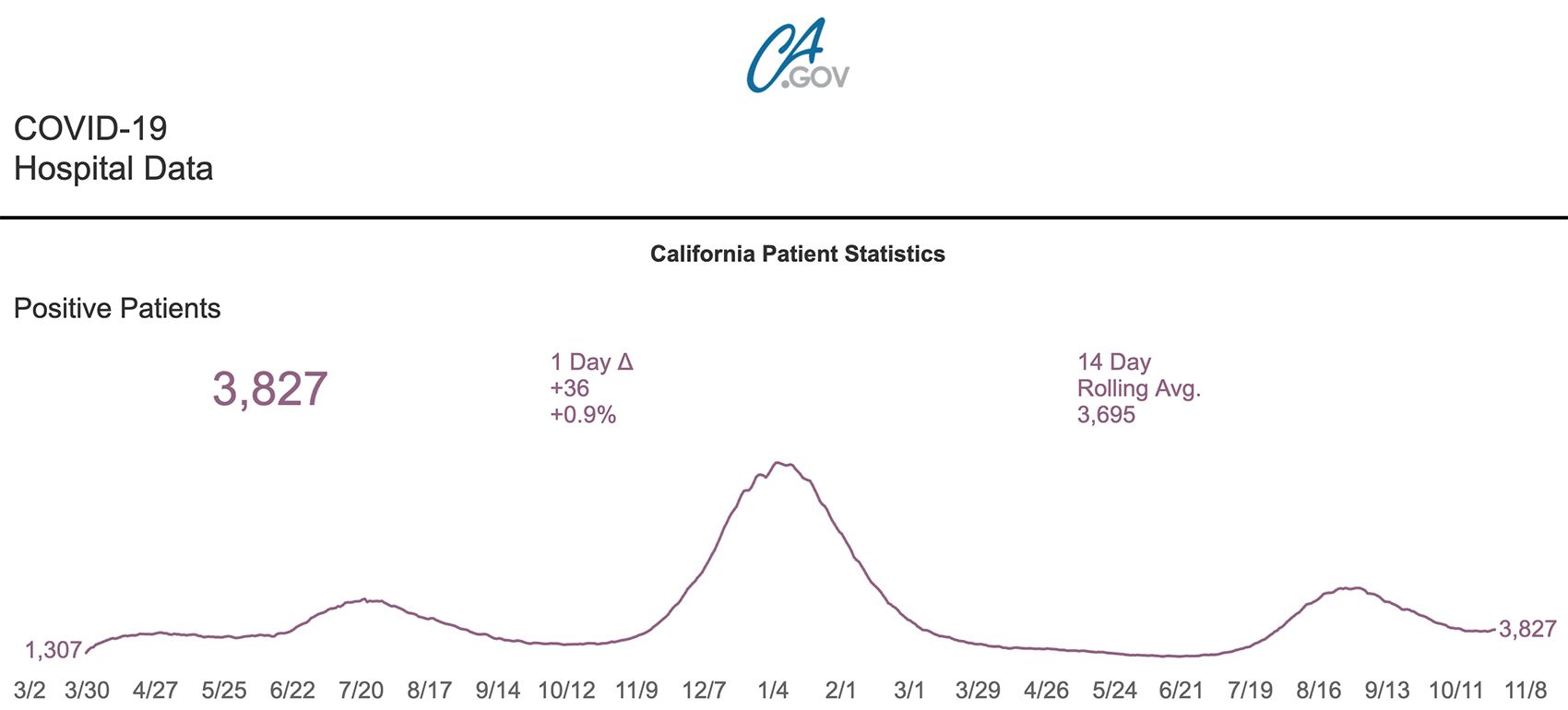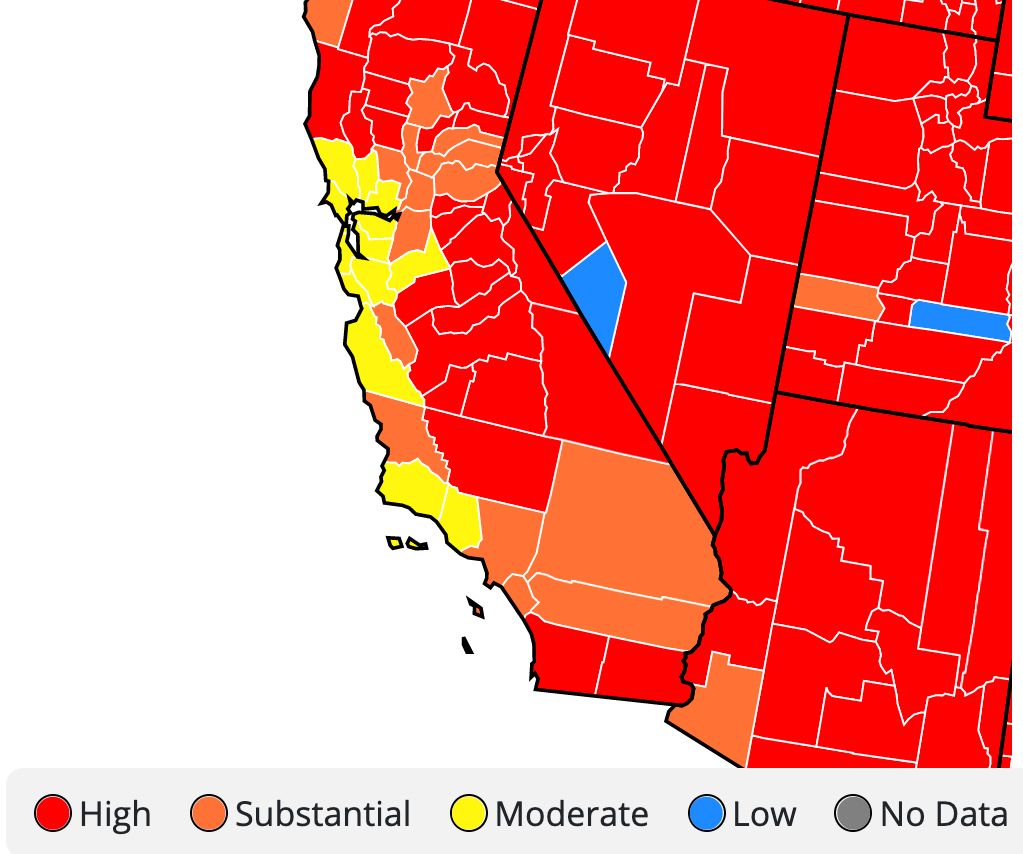The steady decline in COVID numbers in California has stopped, and state health officials are somewhat worried that people are tired of vigilance, and we could be headed for a winter surge that no one wants.
It's hard to say just yet what is keeping new COVID case numbers persistent in California, which is currently the state with the third-lowest daily case rate in the country. Between the likely need for booster shots of vaccines — especially for the elderly and those in high-risk jobs who got their vaccines well over six or eight months ago — the lack of an approved vaccine for younger children, and the stubborn remainder of the state population who won't get their shots, there is still room for the coronavirus to spread. Add to that everyone's pandemic fatigue, the perniciousness of the Delta variant (which has also been infecting some vaccinated people), and the slow erosion of masking rules and vigilance, and we have a situation where hospitalizations and deaths from the pandemic could rise again for the second consecutive winter, as they're expected to elsewhere across the country.
The state's seven-day case positivity rate is now 1.9%, and has not been falling as consistently as it was in the last two months. As California's Secretary of Health Dr. Mark Ghaly said in a press call this morning, the rate is "persistently low" but it has "stopped declining." And, he said, if we're going to avoid a bad winter surge, "Certain efforts to really protect Californians are really going to need to be doubled down on."
Ghaly's comments bolster the attitudes of Bay Area public health officers who declined in early October to fully lift the currently in-place mask mandates for most public spaces. Eight Bay Area counties have agreed to common metrics, which include 80+% overall vaccination in the county population (including all ages) and a yellow or "moderate" transmission rate for the county as designated by the Centers for Disease Control.
COVID hospitalizations, both statewide and in the nine-county Bay Area, were falling consistently in August and September, but since the second week of October there has been a leveling off, and even a small uptick in the state number.

As of Tuesday, there were 482 people with severe COVID infections in Bay Area hospitals, nearly the same number as there were two weeks earlier. It appears that hospitalizations are plateauing, therefore, at a level that's more than double what the region saw in mid-June, when cases dropped to their lowest point in a year — but it's possible this will change if this data reflects many of the same cases remaining in hospital care over that two-week span. 145 Bay Area residents have died from COVID during the past two weeks.

Also as of this week, all of the Bay Area is now in the CDC's yellow tier for "moderate" COVID transmission, which equates to a seven-day average of less than 50 daily new cases per 100,000 residents. Most of the Central Coast, along with Santa Barbara and Ventura counties are also in the yellow tier this week.

But the state seems to be sending a warning that — once again — we shouldn't be thinking we're out of the woods with this pandemic.
As the Chronicle notes, Dr. Erica Pan, the state epidemiologist who previously served as health officer for Alameda County, noted optimistically that the state will likely begin vaccinated 5- to 11-year-old children next week as soon as the approval for the Pfizer vaccine comes through — and that represents another 3.5 million state residents, or 9% of the population, though there are likely to be parents who decline to get their kids vaccinated.
Both Ghaly and Pan urged everyone to get their flu shots, and everyone who is eligible to get a booster.
"It is critically important for us to make sure we have the strongest immunity… as we enter this holiday season and gather with our loved ones," Ghaly said, per the Chronicle.
Much of the country, meanwhile, still remains in the CDC's highest-risk category for COVID transmission, and that hasn't changed in months. Only three states on the eastern seaboard — Connecticut, New Jersey, and Maryland — have entered the orange or "substantial" tier, along with several southern states including Texas, Louisiana, and Florida.
California, which had been back in yellow or "moderate" territory as of last week, slipped back to the orange zone as of Wednesday — with a seven-day new case average of 70.1. Florida and Connecticut are the only two states with slightly lower daily rates as of today.


